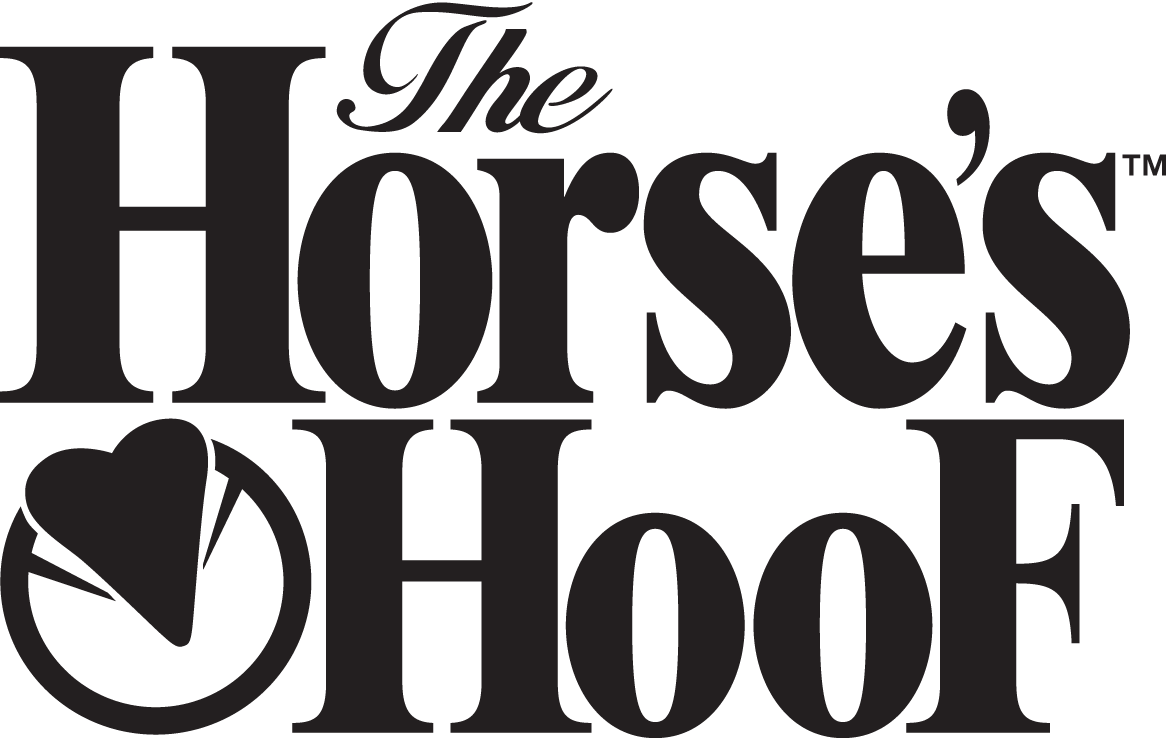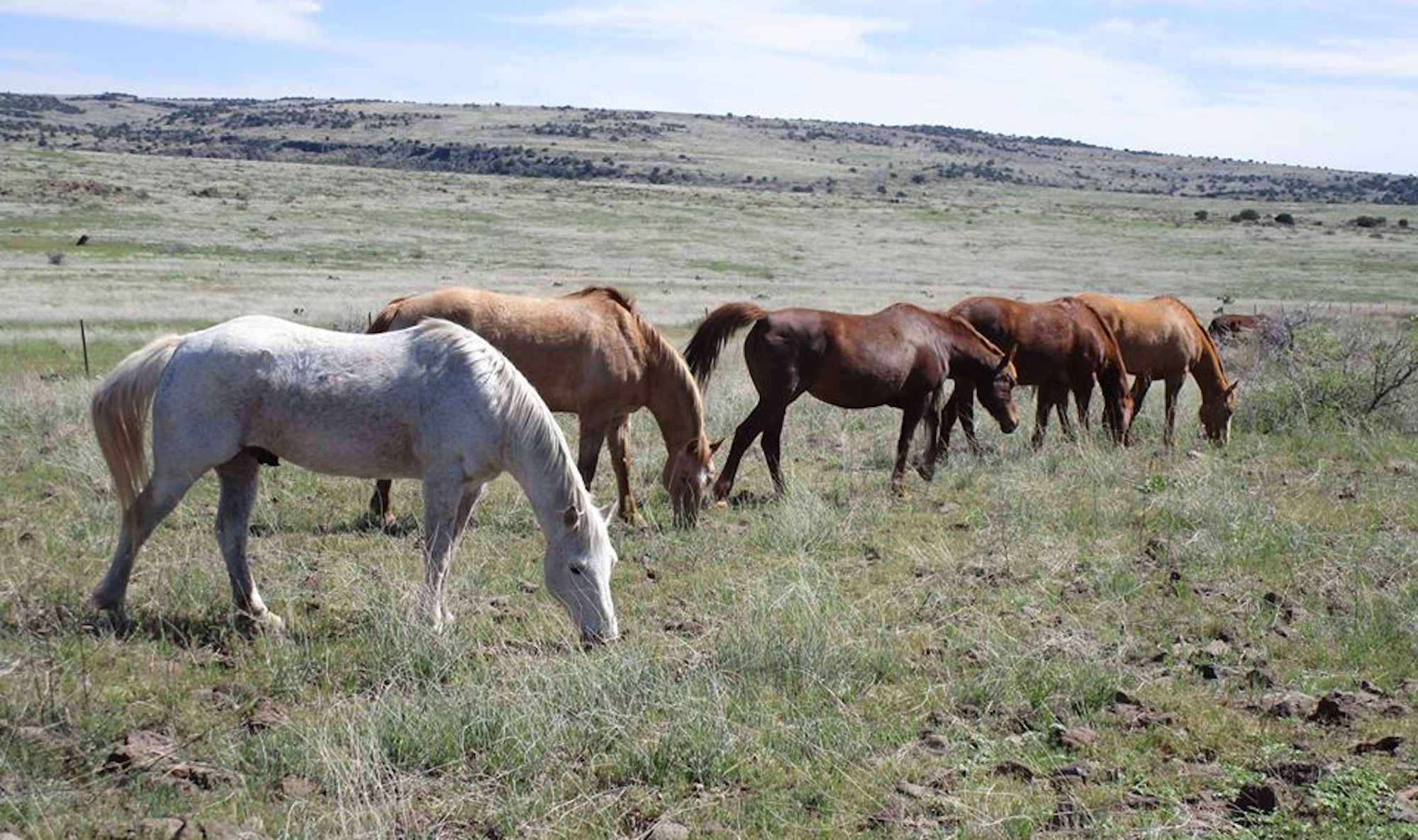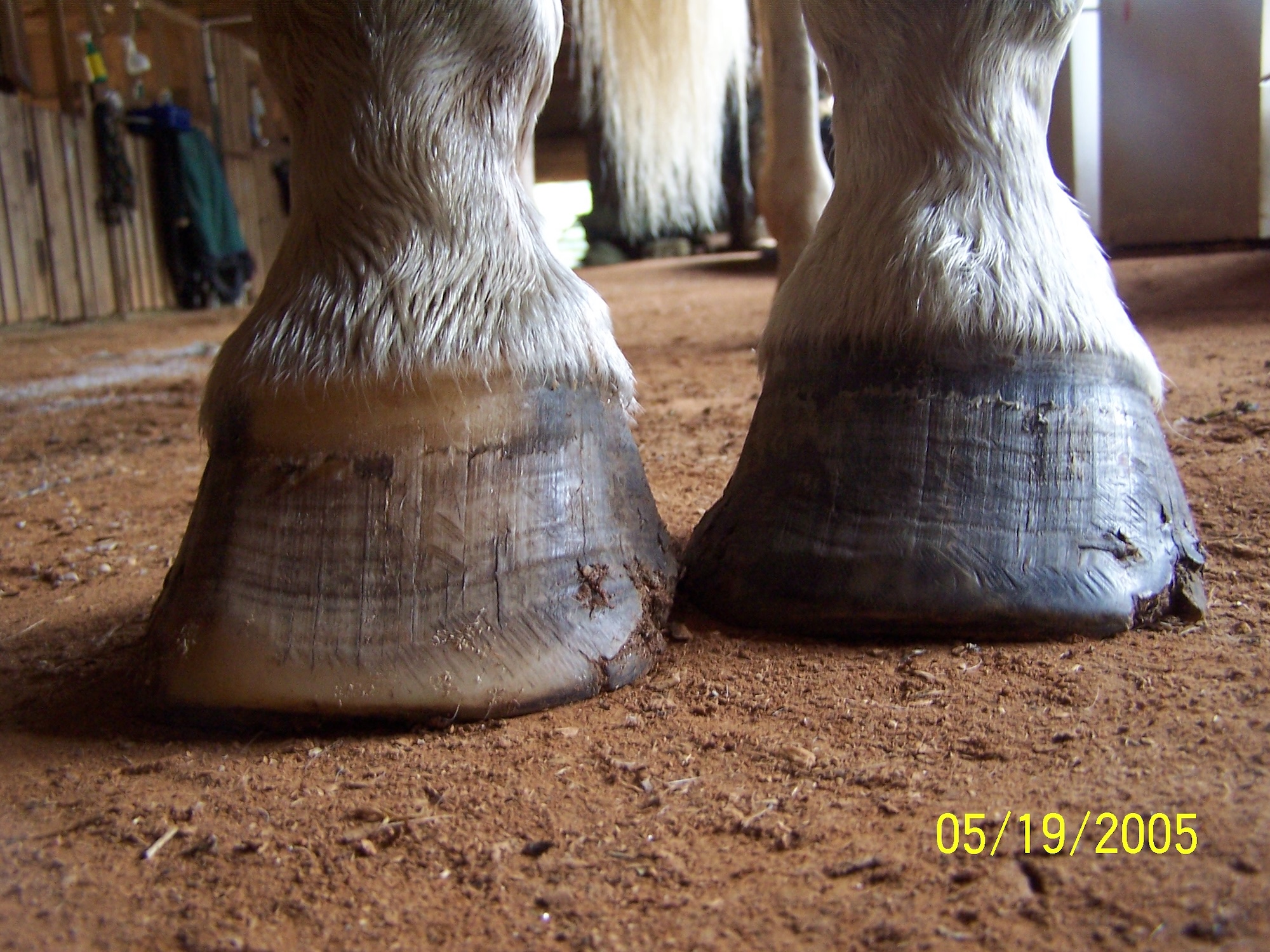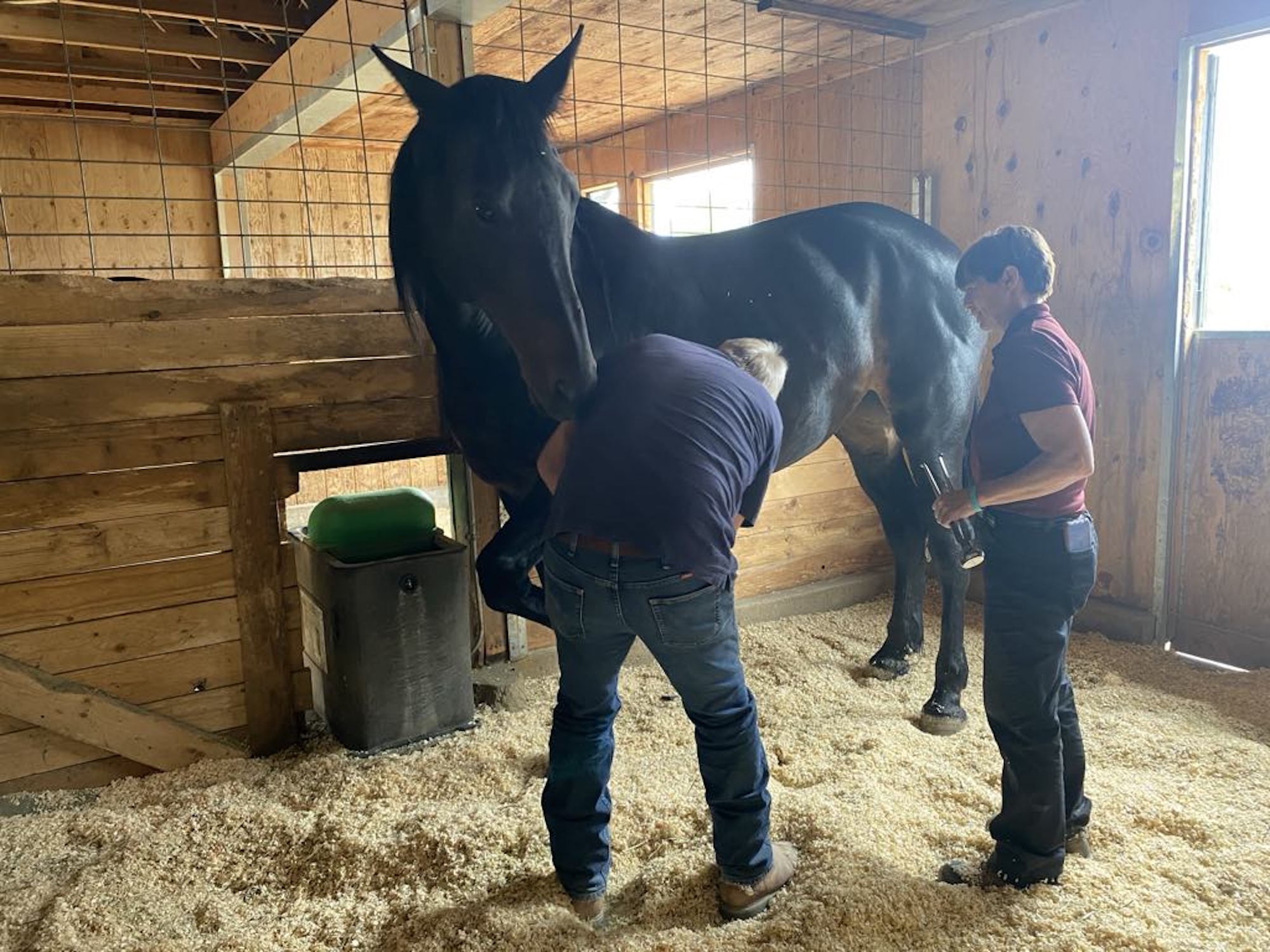Horses are surrounded by everything that affects their lives.
Environment is so much more than the ground we walk on. How wet or dry is it? Are there plants and trees and grasses? What kinds? Is the air humid or dry? How much rain falls and how often? Is it flat or hilly or mountainous? Sandy or rocky or muddy or hard-packed? Are there stallions and mares around, and how does that affect the environment? What about other animals or horses and what kinds? Are there predatory animals and insects that add a flavor to the environment? How many people are around and what are their intentions? Are our interactions with the horses an important environmental consideration? Where is the food, what kind is it, and how much is there? How about the water? Is the quality and quantity and location important to consider? How about the quality of the horses’ internal environment? If you could see inside their stomach and intestines, what would it look like, and why? Is there quality to their “emotional environment”? Are the horses content and alert to their surroundings? Worried or fearful? Apathetic or dull?

Isaac Newton spoke of “every action having an equal and opposite reaction.” Adding the dimension of time, we can predict how hooves will harden and callous and self-trim with “action” on hard, dry, rocky ground, while hooves will soften, flare and overgrow on soft, wet, muddy ground. So if every action has an equal and opposite reaction, the importance of studying the horse’s environment becomes easy to appreciate. While we love to examine and admire the appearance of healthy hooves and beautiful horses, let’s also take time and effort to study the other side of the equation: the environment inside and outside the horse.
We actually spend a lot of time looking at this side of the equation, but I’d like to shine a brighter light on all of it to emphasize its importance. I get calls and messages every day about hoof cracks, abscesses, founder, thrush, lameness and thin soles. Instead of finding out more specifics or looking at pictures, these are some of the first questions I ask:
- What are the horses eating? (Note I asked about “horses,” not just the one horse, and if alfalfa is all they get, I know we’re starting from the beginning.)
- Where on the planet do you live? (The Desert Southwest USA, or the Rainforest of Brazil makes a big difference.)
- What kind of habitat do you have for the horses? (Stalls vs. arenas vs. track systems? Hmmmm…)
- Are they shod or trimmed? (It saves time to know ahead of time if someone is interested in natural hoof care.)
- Feeding any supplements? (If the list is large, I know we likely have a lot of changes to make.)
- What do you do with your horses? (Do the horses have a “job,” or do they stay active vs. standing around.)

A herd of horses grazing on the natural scrub grasses on Dr. Teskey’s Arizona ranch.
While many of us are very aware of the effects of diet and movement and herd dynamics on the health of the horses, there is still a huge amount of mismanagement in some of the most “elite” horse facilities in the world, where horses slowly deteriorate and die early deaths.
So this is where the good work is. My passion is to learn why healthy horses are healthy, and educate others that their horses might lead healthier lives. If I do my job well, I’ll be out of a job. Note that horses live everywhere humans live. This is for the humans’ convenience. We love that horses are highly adaptable – they can live in many different environments, but not be HEALTHY in some environments without some conscious management.
Here are some “morsels” I’ve picked up over the last fifteen years, and I hope you will add to them and help shine more light on what builds honestly healthy horses. This makes for happy horses and humans:
1) The ideal “terrain” for a horse varies in its composition, supporting and massaging unshod hooves, leaving behind a pretty hoof print. It is dry most of the time, and has bits of sand and rock to encourage exfoliation and callusing. If your area is not like this, bring in sand and rock, and landscape flat areas to encourage drainage. You can’t stop the rain, but you can bring in the rocks! Using flexible boots protects hooves if necessary, while nailed-on steel is uniformly damaging – appreciate that whatever you place under a hoof becomes the “terrain” that horse is walking on.
2) Movement is protective against nearly every “problem” your horses may have. Horses on the move are healthy horses. Whatever it takes to get your horses to move more every day, do it. Do not confine horses to stalls, even at night – leave the doors open. The changes you make to your horses’ habitat to encourage movement are critical. Movement is so magical, that you can feed free choice alfalfa in a soggy rainforest, but unless such horses travel many miles per day, they will become obese, insulin resistant, founder and then die.

This horse receives natural exfoliation and conditioning from living on hard terrain and rocky ground.
3) Keep mares and geldings together. Though we don’t see many places with stallions kept with the herd, think about how truly “artificial” it is to have sterile male horses around, and NOT have stallions around. For our convenience, we just castrate them all. Still, most geldings in healthy habitats will be interested in mares, which really helps the entire herd dynamic by providing healthy interactions and behaviors between the sexes.
4) Put your water source as far from your feeding areas as possible. Horses have been “making the trek” to water for millions of years. Watch your horses when they decide to go get a drink – they look like they are on a serious mission, and it is a highlight of the day. Having water right next to your feeding area is likely to lead to over-drinking and weakened kidney function in the long run. The healthiest horses drink larger volumes once or twice a day, building strong digestive and metabolic processes. Place feed in different areas and “hide” healthy treats to invite more movement and enrich your horses’ habitat.
5) Be intermittent about feeding vitamin/mineral supplements. The healthiest horses don’t find “everything they need” in their environments every day of their lives, and their body weight fluctuates throughout the year. Horses are not at all like humans in many regards, but we force them to fit in our molds. They store vitamins in the spring and summer for use in the fall and winter. Feeding vitamins every day makes for a “lazy” liver metabolism—during winter months, horses’ bodies call upon reserves of vitamins and minerals and energy stores, naturally losing some weight. Instead, consider daily supplementation in the spring and summer, and then just on the weekends in the winter, as this respects the seasonal pressures that horses have evolved to handle. Special situations are obviously a different story.
6) Encourage a rich population of gut bacteria. Avoid antibiotic drugs. The magic of horses surviving on grass is based on the bacteria in their gut. Grass forage, multiple horses, probiotics on occasion, complementary vitamin/mineral supplementation, considerate management of your pastures and habitat, and plenty of movement provide the best chance for optimal gut flora. This “internal environment” is fast becoming the key to understanding why the healthiest horses accomplish what they do. Horses don’t digest grass, bacteria do.
7) Do fecal exams and research the timing of treatments to avoid giving your horses unneeded dewormer. The healthiest horses have a population of parasites that doesn’t get out of control or cause damage. This internal environment of the gut is key for health, and healthy horses will very likely have some parasites in their gut.
8) Avoid vaccinating indiscriminately or every year. Honestly evaluate whether there is a real threat, and do your research on effectiveness (Flu and Rhino vaccines, for example, are some of the most worthless vaccines out there). Healthy horses’ immune systems are able to respond for several years, and vaccinating every year is an environmental pressure that can cause serious damage. The state of your horses’ immune system is arguably one of the most important health considerations you will consider.
9) Examine your horses’ front teeth (incisors) to see if they come together straight, and learn how to assess them for length. Unless your horses graze a good amount, their incisors WILL be too long, leading to a whole array of problems. The best equine dentists address the incisors first before doing any adjustment of the rear chewing teeth. Horses’ teeth engage the environment in so many more ways than just handling food. Along with the hooves, they provide a foundational balance to the entire body.

Dr. Teskey examining the teeth of one of his equine patients. It is very important that the incisors be addressed first.
10) Learn horsemanship and handling techniques that are nonpredatory, favoring a partnership with your horses over a dictatorship. Practice checking in with your horses’ emotional state, and feel how your emotional state effects them, and vice-versa. An “emotional environment” that promotes confidence and alertness prevents stress hormones from damaging internal organs, causing premature illness and death. A balanced temperament provides an “equal and opposite” corrective force when faced with excessive or deficient energies and behavioral issues. Ultimately, there’s no one that can provide for and nurture this amazing ability except YOU.
Attaining optimal health for your horses lies in your willingness to consider the nature of the horse and the nature of yourself. There are many horses I am unable to help, due solely to their owner’s unwillingness to learn and implement something better. Everything we do exerts a pressure that is either in harmony or disharmony to horses’ abilities to stay healthy and/or heal. The healthiest horses need the fewest interventions, while horses that find themselves in a rut can often be helped by massage, chiropractic or energy work. I encourage you to trust in your horses’ ability to “be a horse” if you provide the ingredients that are essential to this end. I am here to support you, and I look forward to visiting with you more, or connecting with you at a clinic some day soon.

Dr. Teskey with Big Joe the horse and Rio the mule.
For more from Dr. Teskey: Visit his Facebook page “Tomas G. Teskey Veterinary Insights” for articles and videos covering all the subjects in this article in much more depth. His website is located at: https://www.insighttoequus.com
by Tomas Teskey, D.V.M., published in The Horse’s Hoof Magazine, Issue 59, Summer 2015
See the full content listing of all issues of The Horse’s Hoof Magazine! We also provide instructions on how to read the issues for free on Hoof Help Online.
For a detailed listing of all articles on The Horse’s Hoof website, please visit our Article Directory.




